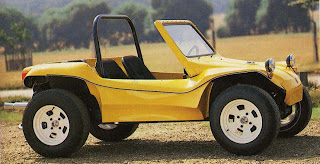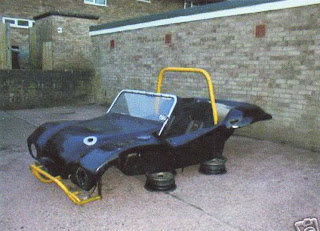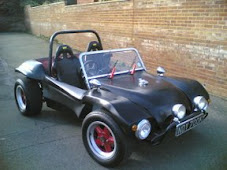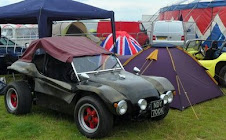 11th August 2011.
11th August 2011.It is a very say day today that we remember 10 years ago the atrocity that happened and only hope it makes us stronger.
My previous exploration of my engine had left me finding oil in my barrels and I was lucky to be able to buy some 1641 B&P to fit in place of my 1600 b&P . I had also realized that I had Scatt pro street 1:25 rockers bolted to my heads in addition to the Engle cam.
Removal
Removal of the Barrels and Pistons is fairly straight forward but you need a pair of long nose pliers and a rubber mallet and a socket set drive. I start by removing both cylinders on one side. Making sure to note which cylinder was which by placing them in different areas. With the cylinders carefully removed the pisto
 ns are exposed great care should be taken not to scratch or mark them if you are intending to re-fit. Use the pulley to careful turn the engine so the no 2 cylinder piston is at TDC . This will give you maximum room to get the gudgeon pins out. Use the long nosed pliers on the two tabs that come down and gently pinch them together , shield the crankcase so this can not pop into the crankcase. With the gudgeon pinched together it can be retracted from the piston. The Gudgeon circlip clip can then be removed from the other side of the piston. The Gudjeon pin can then be pushed out of the piston either with your fingers or the end of the socket wrench. It might be necessary to tap the wrench using it as a punch with the rubber mallet to remove the pin. Be extremely careful to pad the piston so that it does not knock against the case studs. As the Gudgeon pin is with drawn the piston will fall of the connecting rod. This will give to the opportunity to inspect the brass bearing in the connecting, you should also check it with the gudgeon pin for excessive play. With the no 2 B&P removed place the piston in no2 Cylinder so you can keep the two together as it is not good to mix them up. The no1 piston is then removed in the same way rotating the engine and removing circlips and gudgeon pin. Once both cylinder barrels and pistons have been removed you can proceed with cylinders 4 and 3. start with Cylinder 4 and then move onto cylinder 3. With your barrels all off they can be re-honed or new rings can be refitted . A piston ring compression tool is needed to get the pistons back in the barrels they can be purchased cheaply through motor factors.
ns are exposed great care should be taken not to scratch or mark them if you are intending to re-fit. Use the pulley to careful turn the engine so the no 2 cylinder piston is at TDC . This will give you maximum room to get the gudgeon pins out. Use the long nosed pliers on the two tabs that come down and gently pinch them together , shield the crankcase so this can not pop into the crankcase. With the gudgeon pinched together it can be retracted from the piston. The Gudgeon circlip clip can then be removed from the other side of the piston. The Gudjeon pin can then be pushed out of the piston either with your fingers or the end of the socket wrench. It might be necessary to tap the wrench using it as a punch with the rubber mallet to remove the pin. Be extremely careful to pad the piston so that it does not knock against the case studs. As the Gudgeon pin is with drawn the piston will fall of the connecting rod. This will give to the opportunity to inspect the brass bearing in the connecting, you should also check it with the gudgeon pin for excessive play. With the no 2 B&P removed place the piston in no2 Cylinder so you can keep the two together as it is not good to mix them up. The no1 piston is then removed in the same way rotating the engine and removing circlips and gudgeon pin. Once both cylinder barrels and pistons have been removed you can proceed with cylinders 4 and 3. start with Cylinder 4 and then move onto cylinder 3. With your barrels all off they can be re-honed or new rings can be refitted . A piston ring compression tool is needed to get the pistons back in the barrels they can be purchased cheaply through motor factors.Refitting.
Before refitting your Barrels and Pistons I find it a much easier job if you prepare them before fitting them to the engine. It is imperative your rings are fitted correctly and the gaps in the rings are non adjacent to each
 other. If you have purchased completely new Barrels and Pistons your Pistons will already be in your barrels. If they are not you can use a piston ring compressor to compress the piston rings. I use the Clarke piston compression tool . This is a good tool that has a spru
other. If you have purchased completely new Barrels and Pistons your Pistons will already be in your barrels. If they are not you can use a piston ring compressor to compress the piston rings. I use the Clarke piston compression tool . This is a good tool that has a spru ng steel construction that can be tightened by the 1/4" drive to fit tightly onto the piston. always leave 2mm from the top of the piston when this jacket is fitted. so that the piston will nuzzle inside the barrel. With the piston and compression tool fitted and sitting on the top of the barre; the piston top 2mm should be inside the barrel. I find it is useful st spray the barrel with spray 3in 1 oil before this. A piece of wood can be inserted into the crown of the piston and used as a punch to swiftly but gently drive the piston in to the barrel. Once you have repeated this for all four barrels we are ready to get them setup to go in..
ng steel construction that can be tightened by the 1/4" drive to fit tightly onto the piston. always leave 2mm from the top of the piston when this jacket is fitted. so that the piston will nuzzle inside the barrel. With the piston and compression tool fitted and sitting on the top of the barre; the piston top 2mm should be inside the barrel. I find it is useful st spray the barrel with spray 3in 1 oil before this. A piece of wood can be inserted into the crown of the piston and used as a punch to swiftly but gently drive the piston in to the barrel. Once you have repeated this for all four barrels we are ready to get them setup to go in..The final planning and time spent here can make the pistons easier to fit. Start by placing the four pistons out on the floor in the patter that they will fit the crankcase. Turn each one over in turn and check that the arrow on the pistons all point the same direction. On the engine this will be the flywheel and these arrows will keep us orientated on either side place the flats together as they would be fitted to the engine work on no1 piston first the right back one. rotate the piston so the arrow faces to the back gently pull the piston out of the barrel so that it just exposes the gudgeon pin hole. When you have exposed it place a circlip in the piston on the side the arrow is pointing too. Repeat this for all four pistons. This will help you later when it comes to fitting the pistons spray a little spray oil on the gudgeon pins and piston gudgeon pin holes. The gudgeon pins can be gently pushed into the four pistons the circlip we placed earlier will ensure this goes in the correct side. Stat with piston and barrel one hold it against the crankcase check the piston is facing the fly wheel and locate the connecting rod in the piston . Push the gudgeon pin through the piston onto the circlip. You may need to reorient the engine pushing the connecting rod on no1 to T.D.C before you can connect the two parts. You must remember to put the gudgeon pin in the front side of the piston Use the pliers to pinch the circlip together and carefully put the circlip back in . Guard the crank case so this cannot fly into the case should it spring out whilst you are installing it. Next get no2 ready repeat the procedure check the arrow is pointing to the flywheel. Move the engine so that no2 is at T.D.C. Nock in the gudgeon pin and remember the circlip. Swap sides and start with No 3 check the arrow on the piston and barrel is pointing to the flywheel and fit as above. Cylinder 4 can then be fitted.
You should have your cylinders now fitted mine took about an hour to remove and 1/2 an hour to fit.




















